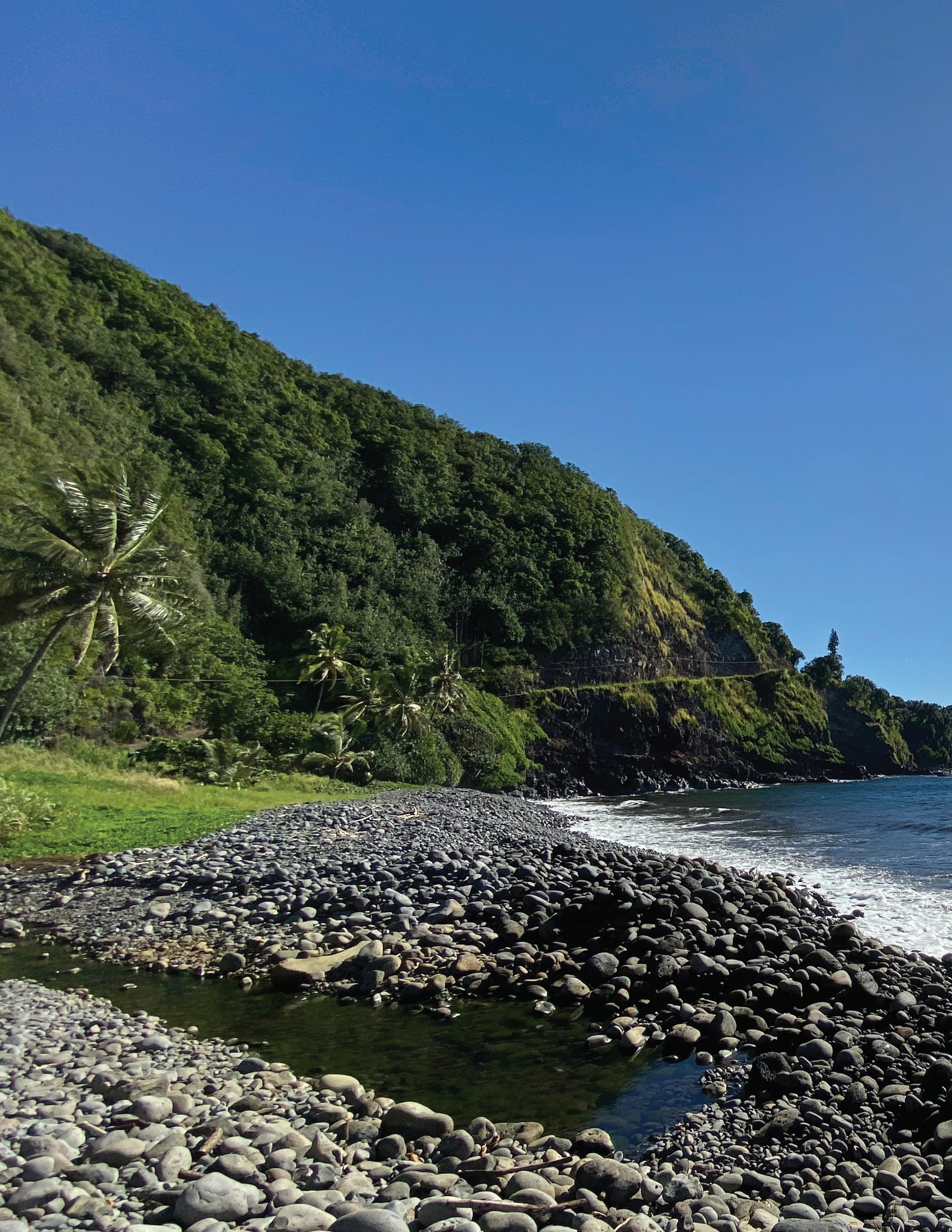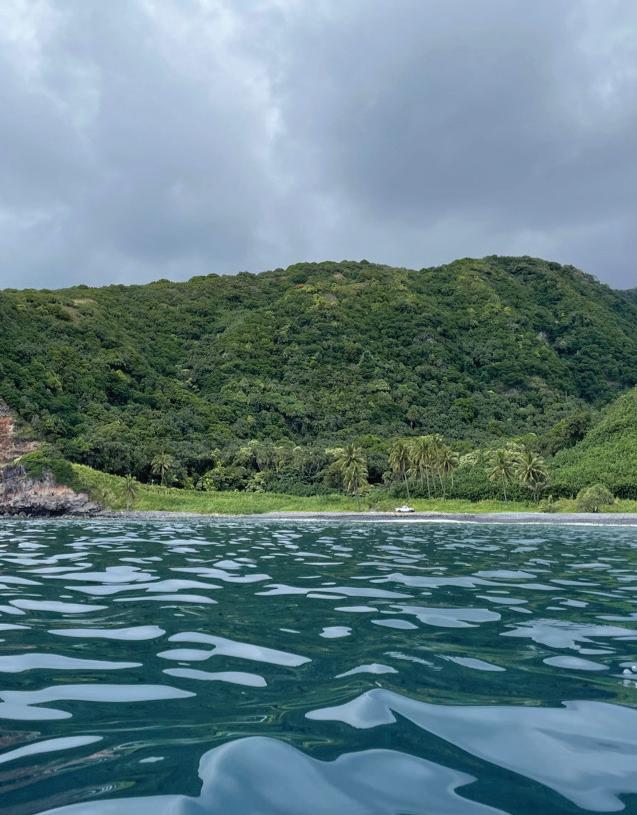
4 minute read
Kīpahulu Moku CBSFA
By the Kīpahulu 'Ohana
Protecting our Ocean Resources
Advertisement
Overharvesting, harvesting out of season during spawning times, and harvesting individuals that are either too small or too large—these are some of the unsustainable activities that led the Kīpahulu ‘Ohana to take action in an effort to protect Kīpahulu’s fisheries.
Thirty to forty years ago, local fishers described the abundance of the ocean, noting that fish would “come up to smell your spear” and “papio would come when you snap under water.” Since then, resources have been observed to decline, suggesting room for improved management.
With input from kūpuna, fishermen, community members, scientists, managers, and teachers, we developed our Mālama I Ke Kai plan in 2012, identifying species that are most important to our Kīpahulu community, what threats face them, what kind of protection we would like to see happen instead, and a plan of action to reach our goals.
One of the priority actions identified in the Mālama I Ke Kai plan was the designation of Kīpahulu moku as a CommunityBased Subsistence Fishing Area (CBSFA). We’ve been working toward this goal for the last ten years. With site visits, biological surveys, and many community meetings and talk story sessions, we developed a proposed set of rules to protect Kīpahulu’s fisheries. In 2019, we formally submitted the proposed Kīpahulu Moku CBSFA rules and management plan to the Division of Aquatic Resources.

Kīpahulu 'Ohana
Hawaiʻi’s CBSFA designation formally recognizes local communities as valued partners in co-managing natural resources, and is the only state fisheries management designation that reaffirms and protects traditional and customary practices for subsistence and culture.
The CBSFA will span roughly 5.7 miles of shoreline from Pua‘aulu‘u Stream to Kalepa Stream (the Kīpahulu moku boundaries) out to a 60-meter depth.
The rules will also establish a fish sanctuary in Kukui Bay, and will make the previously voluntary ‘Opihi Rest Area, adjacent to the National Park campground, into a rule. Our focus is on education and outreach, so that fishers understand the reasons behind these rules—to help protect our fisheries for the future—and will comply because they want to be lawai‘a pono.
Because we have continued to seek input on these proposed rules, we are moving closer to the State’s formal administrative rule-making process. On June 7, the Division of Aquatic Resources (DAR) held a public scoping meeting, and received some very constructive comments. The next step is for the community and DAR to finalize the proposed rules package and send it to the Board of Land and Natural Resources, who will approve a formal public hearing; then it will go back to BLNR for final approval.
We seek to honor the traditional practices of our kūpuna, to protect our resources for our mo‘opuna, and to perpetuate our Hawaiian subsistence lifestyle. We hope to serve as an example for other communities in Maui Hikina and beyond who share similar challenges and concerns and seek to be proactive in protecting their resources and Hawaiian ways of life.

Kipahulu 'Ohana
Some highlights of the Kīpahulu Moku CBSFA proposed rules include:
• 10 total finfish bag limit (per person per day)
• Adding a maximum size or “slot limit” for ‘ōmilu and moi to protect the largest “prime spawners” with the greatest reproductive capacity
• ‘Akule non-commercial take only
• Extending the closed season for moi from May to September, to adjust for changing spawning seasons due to climate change
• Max 2 lines deployed per person, with max 2 hooks per line
• No taking or possession of marine life while night diving
To view the complete CBSFA proposed rules package, management plan and other supporting information, please visit kipahulu.org/cbsfa.
Follow us on Instagram and Facebook @kipahuluohana.










